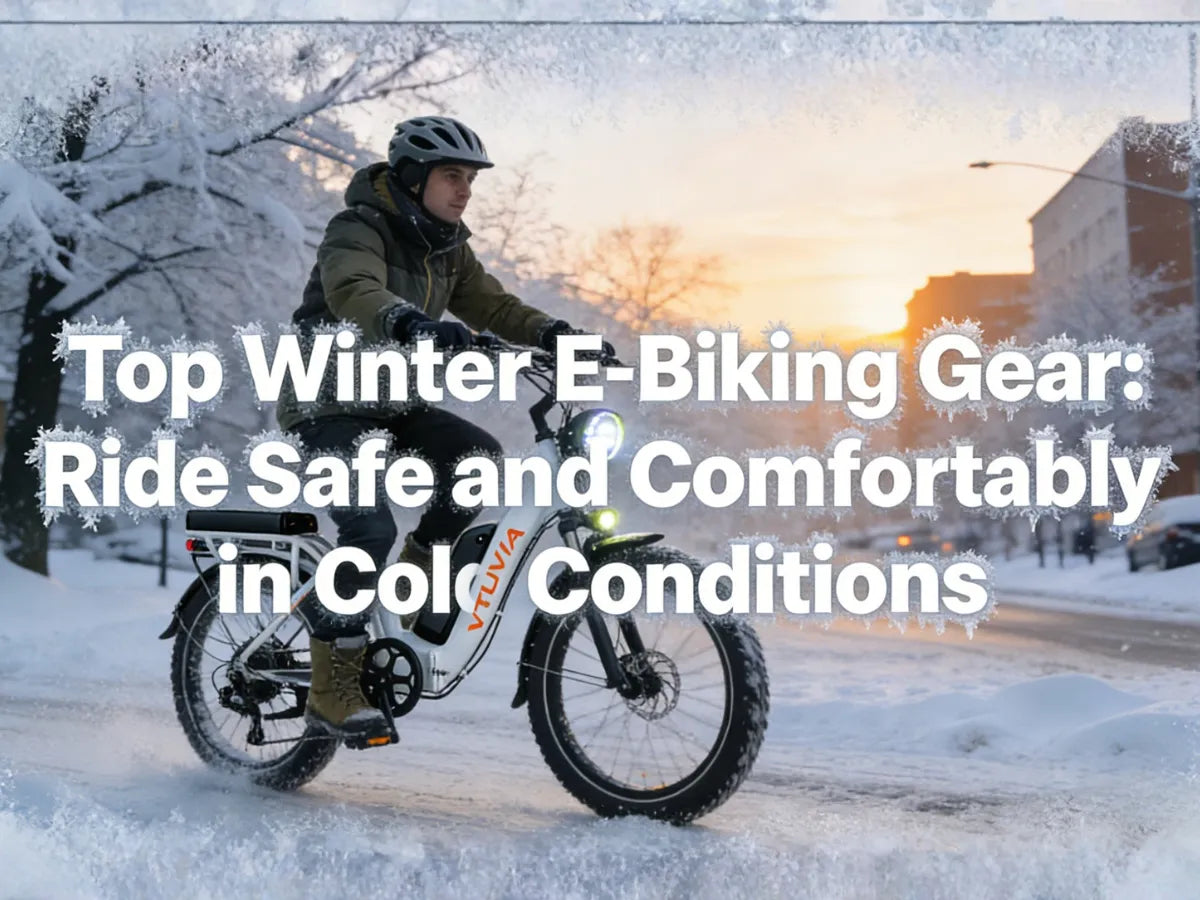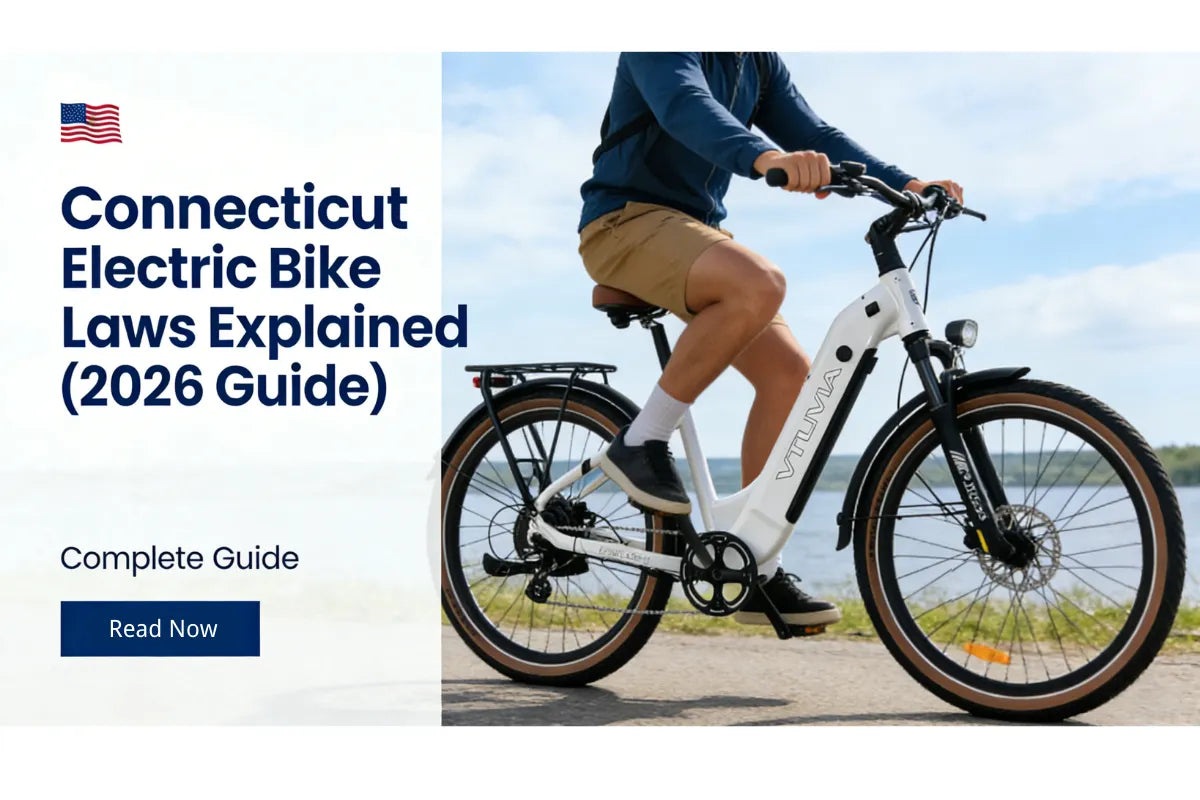
Fat tire electric bikes (fat tire e-bikes) have gained immense popularity in recent years, becoming a favorite choice for many cycling enthusiasts. Their unique appearance and powerful off-road capabilities have earned them a strong position in the market. However, for many potential consumers, the question remains: Are fat tire e-bikes difficult to ride? In this article, we will dive into the key factors that influence the difficulty of riding a fat tire e-bike and help you determine whether it is the right choice for you.
1. Weight of the Fat Tire E-bike and Its Impact on Riding Difficulty
One of the most significant differences between fat tire e-bikes and standard e-bikes is their weight. Fat tire e-bikes are generally built with stronger frames and larger tires, which make them significantly heavier. This added weight can become a challenge, especially for new riders or those with less physical strength, particularly when stopping, starting, or climbing uphill.
If you're considering using a fat tire e-bike for city commuting, or if you need to lift or move the bike frequently, the extra weight may make it feel more difficult to handle compared to lighter e-bikes. However, the electric assist system helps reduce the physical effort required, so even with a heavier frame, riding won't feel too challenging, especially on flat roads or when going uphill.
Key Takeaway: Fat tire e-bikes are heavier, which can make them feel harder to handle for city commutes or tight spaces, but the electric assist makes up for this extra weight, reducing physical effort.
2. The Effect of Tire Width on Riding Experience
The most defining feature of fat tire e-bikes is their wide tires. These tires provide enhanced comfort and grip on uneven surfaces, such as sand, snow, and muddy trails. The large surface area increases stability, allowing riders to handle rough terrain with more ease.
However, the wide tires also result in higher rolling resistance, especially when riding on smooth city streets. This increased friction means that riders may need to exert more effort to maintain speed on flat, paved roads. While the wide tires enhance off-road performance, they can make riding in urban environments feel more labor-intensive, particularly when attempting to ride quickly or make sharp turns.
Key Takeaway: Wide tires provide stability and comfort on rough terrains but can increase rolling resistance, making riding on smooth city streets more challenging.
3. The Role of the Electric Assist System
The electric assist system is one of the most important features of a fat tire e-bike. It automatically provides additional power based on the pressure you apply to the pedals, helping you conserve energy. This feature is particularly beneficial for heavier fat tire bikes, as it compensates for the added weight and makes riding more manageable.
Even with a heavier bike, the electric assist system makes it easier to tackle inclines, long distances, and other challenging conditions without excessive physical exertion. Most fat tire e-bikes come with multiple assist levels, allowing you to adjust the power based on your needs, providing a more flexible and comfortable riding experience.
Key Takeaway: The electric assist system helps you overcome the challenges posed by the bike's weight, making it easier to ride on hilly terrain or for long distances.
4. Ability to Adapt to Different Terrains
Fat tire e-bikes excel when it comes to off-road riding. The large tires allow them to easily navigate through sand, mud, snow, and other rough terrains. If you frequently ride in such environments, a fat tire e-bike can provide you with enhanced comfort and stability, allowing you to conquer rugged paths with ease.
However, if you're mostly riding on urban roads, the advantages of fat tires may not be as apparent. The added friction can reduce efficiency and slow you down on flat surfaces. For city riding, other lighter e-bikes may better suit your needs, as they are designed to maximize speed and efficiency on smooth, paved roads.
Key Takeaway: Fat tire e-bikes are ideal for off-road adventures and rough terrains, but they may not be the best choice for city commuting, where narrower tires are more efficient.
5. Rider Fitness and Experience
Lastly, the physical condition and experience of the rider play a crucial role in how easy or difficult a fat tire e-bike is to ride. If you're a beginner or lack the physical strength, you might find the heavier weight and wider tires challenging, especially if you have to ride without the electric assist.
However, for experienced riders who are comfortable with bicycles and have a good level of fitness, the fat tire e-bike's advantages become much more noticeable. The comfort, stability, and smoothness it offers, particularly on rough terrains, make it a great option for those who enjoy long rides or adventure cycling.
Key Takeaway: Fat tire e-bikes are more manageable for experienced cyclists, especially with the assistance of the electric motor. New riders or those with less strength may find it more difficult to handle.
Conclusion: Is a Fat Tire E-bike Right for You?
Fat tire e-bikes are not necessarily the easiest bikes to ride for everyone. Their heavier weight and wider tires may make them more difficult to control, particularly for city commuting or short-distance rides. However, when it comes to off-road performance and tackling uneven terrains, fat tire e-bikes excel, providing unmatched comfort and stability.
If you're mainly riding in urban areas, have lower physical strength, or are sensitive to the bike's weight, a fat tire e-bike might not be the best option for you. On the other hand, if you're into off-road cycling, enjoy exploring various terrains, or need a bike that can handle diverse environments, a fat tire e-bike could be the perfect fit.
Ultimately, whether or not a fat tire e-bike is right for you depends on your riding style, fitness level, and the terrain you plan to ride on. We hope this article has helped you make a more informed decision about choosing the perfect e-bike for your needs.





Share:
Best E-Bikes for Delivery in 2025
VTUVIA Reindeer 2.0: The Upgraded All-Terrain Electric Bike